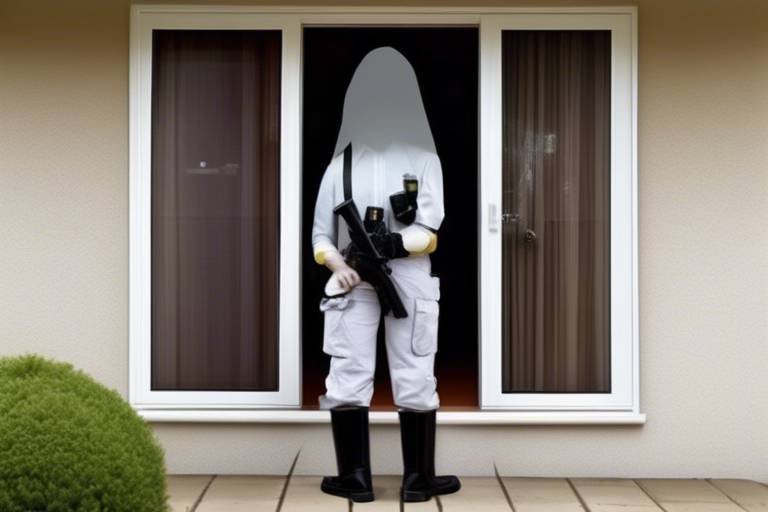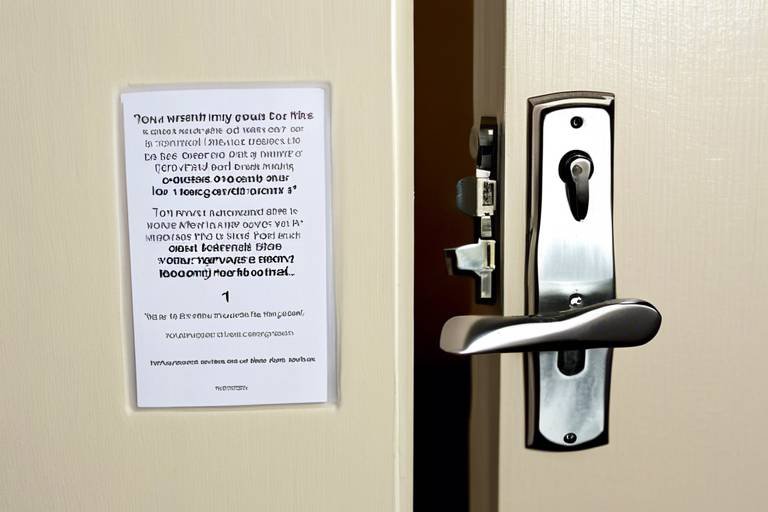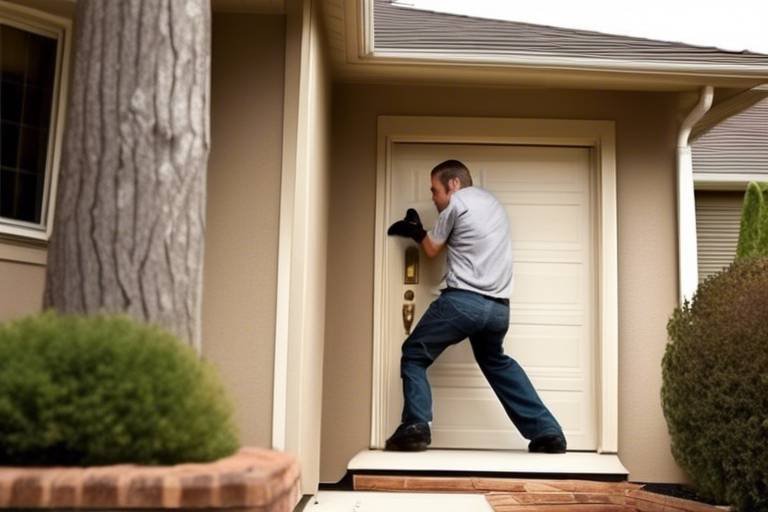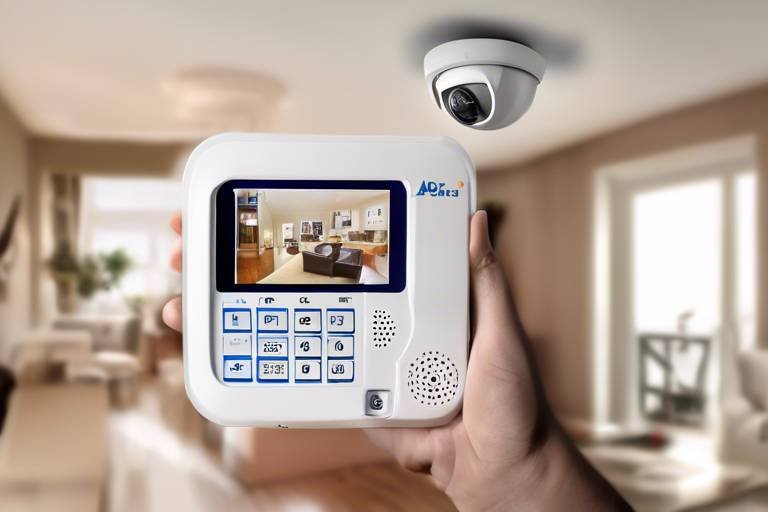Preventing Tripping Hazards at Home: Safety Measures
Welcome to the ultimate guide on preventing tripping hazards in your home! We all want our living spaces to be safe and comfortable, but sometimes we overlook the little things that can lead to big accidents. Whether you have kids running around, elderly family members, or just want to keep yourself safe, understanding and addressing tripping hazards is crucial. In this article, we'll dive into essential strategies and safety measures that will help you minimize risks and create a safer living environment for everyone.
First things first, let’s talk about the typical culprits that can turn your cozy home into a tripping minefield. Understanding where these hazards commonly occur is the first step in prevention. Think about areas such as:
- Entryways: Shoes and bags left lying around can create unexpected obstacles.
- Hallways: Clutter or furniture that sticks out can easily trip someone up.
- Stairs: Loose rugs or uneven steps can lead to serious falls.
- Bathrooms: Wet floors and misplaced items can be particularly dangerous.
By recognizing these common areas and items, you can take proactive steps to eliminate potential dangers and keep your home safe.
Now that we know where hazards lurk, let’s discuss how the right flooring can make a world of difference. Choosing flooring that is both aesthetically pleasing and safe is key. For instance, slip-resistant surfaces can significantly reduce the risk of falls, especially in high-traffic areas. Here are a few flooring options to consider:
- Carpet: Offers cushioning but can have loose edges.
- Vinyl: Durable and easy to clean, with options for slip resistance.
- Laminate: Stylish but can be slippery; look for textured options.
- Tile: Great for bathrooms, but ensure it has a non-slip finish.
Rugs and mats can add warmth and style to your home, but they can also be hazardous if not properly secured. Here are some tips to keep your rugs safe:
Loose edges on carpets or rugs can create tripping risks. To prevent accidents, use double-sided tape or rug pads to secure them in place. If you notice any curling, flatten it out with weights or a heavy book. This simple step can save you from a nasty fall!
The material of your rugs can greatly impact safety. Opt for materials that offer better traction, such as wool or nylon, which tend to grip the floor better than slippery synthetics. Additionally, consider purchasing rugs that are specifically designed to be non-slip.
Proper lighting is essential for preventing trips and falls. Think about all the times you've stumbled in a dark room or misstepped on stairs. Ensuring adequate lighting in various areas of your home can make a huge difference. Use bright LED bulbs, install motion sensor lights in hallways and bathrooms, and always keep staircases well-lit. A well-lit home is a safe home!
A clutter-free environment is key to reducing the risk of tripping. It’s amazing how much a little organization can go a long way! Here are some effective strategies to keep your space tidy:
Regular decluttering can prevent hazards. Set aside time each week to go through your belongings and remove items that no longer serve a purpose. Consider using the one-in-one-out rule—when you bring something new in, let something old go. This helps keep your space manageable and safe.
Utilizing effective storage solutions can help keep items off the floor. Invest in baskets, bins, and shelves to keep your belongings organized. For example, use:
- Wall-mounted shelves: To keep items out of the way.
- Baskets: For quick storage of toys or shoes.
- Cabinets: To hide away clutter and keep surfaces clear.
By implementing these storage solutions, you can create a safer and more organized living space.
Q: What are the most common tripping hazards in homes?
A: Common hazards include loose rugs, cluttered walkways, uneven flooring, and poor lighting.
Q: How can I make my home safer for elderly family members?
A: Consider installing grab bars, using non-slip mats, and ensuring good lighting throughout the house.
Q: Are there specific flooring types that are safer?
A: Yes! Look for slip-resistant tiles, textured vinyl, and carpets with low pile height to minimize risks.
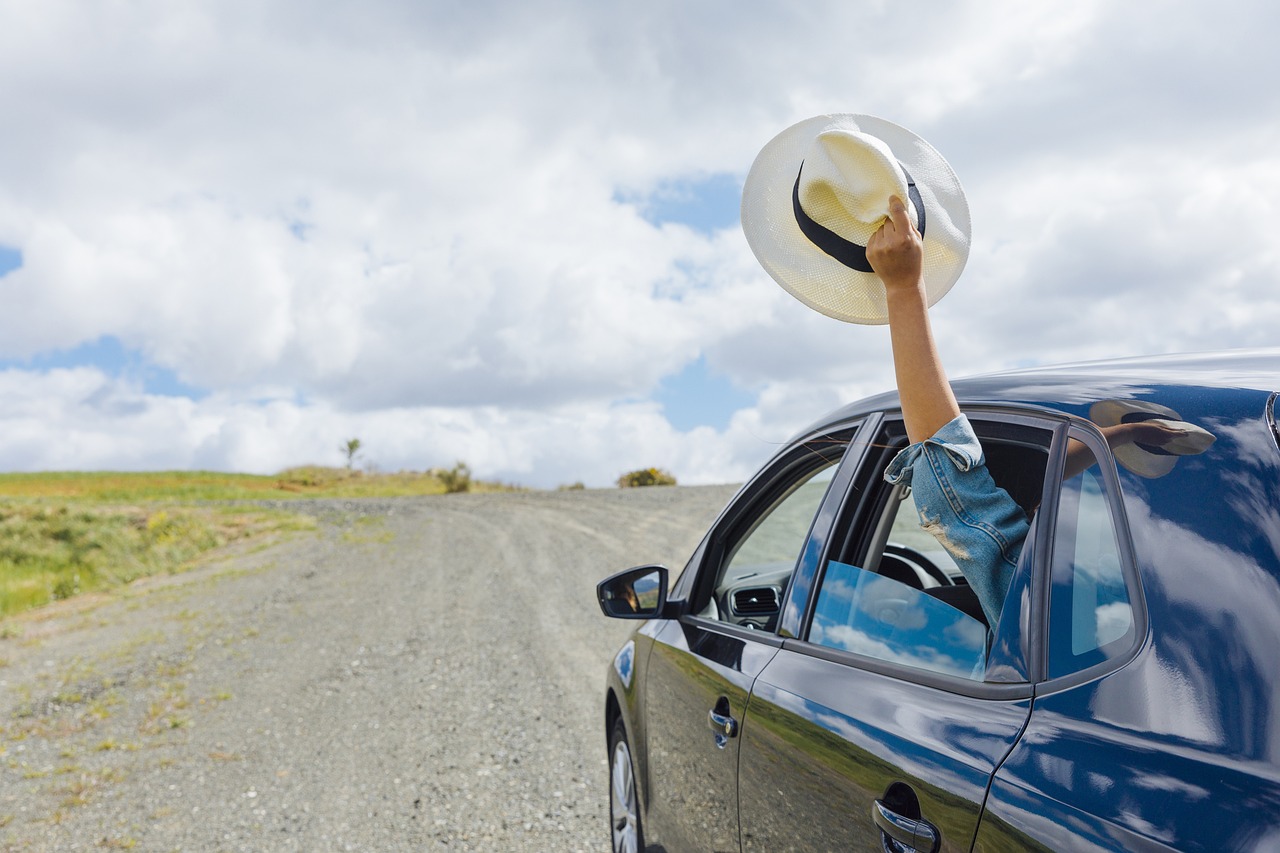
Identifying Common Tripping Hazards
Understanding where tripping hazards commonly occur in the home is crucial for maintaining a safe living environment. Imagine walking through your home and suddenly stumbling over an unseen obstacle—it's not just embarrassing, but it can lead to serious injuries. To prevent such mishaps, we need to be vigilant about the potential dangers lurking in our daily surroundings. Common areas that pose tripping risks include:
- Hallways and staircases: These high-traffic areas are often cluttered with shoes, bags, or even toys, making them prime spots for accidents.
- Living rooms: Cables from electronics can snake across the floor, while coffee tables and other furniture may be positioned awkwardly.
- Kitchens: With so many things happening in this space, spills can create slick surfaces, and scattered items can easily trip you up.
- Bathrooms: Wet floors, bath mats, and scattered toiletries can become hidden hazards that lead to slips and falls.
By identifying these common tripping hazards, you can take proactive measures to eliminate or mitigate risks. For instance, ensuring that hallways are clear of clutter not only enhances safety but also promotes a more organized living space. Additionally, consider the layout of your furniture—are there sharp corners that could catch on clothing or cause someone to stumble? These small details can make a significant difference.
Another area to consider is the presence of pets. While they bring joy and companionship, their toys and sudden movements can create unexpected tripping hazards. It's essential to regularly check the floor for any stray items that might cause you to trip. The key here is awareness; the more you know about where hazards exist, the better equipped you are to prevent accidents.
In conclusion, being proactive about identifying common tripping hazards in your home is the first step towards a safer environment. By keeping an eye on high-risk areas, maintaining an organized space, and being mindful of potential obstacles, you can create a home that is not only comfortable but also safe for everyone. Remember, safety starts with awareness!
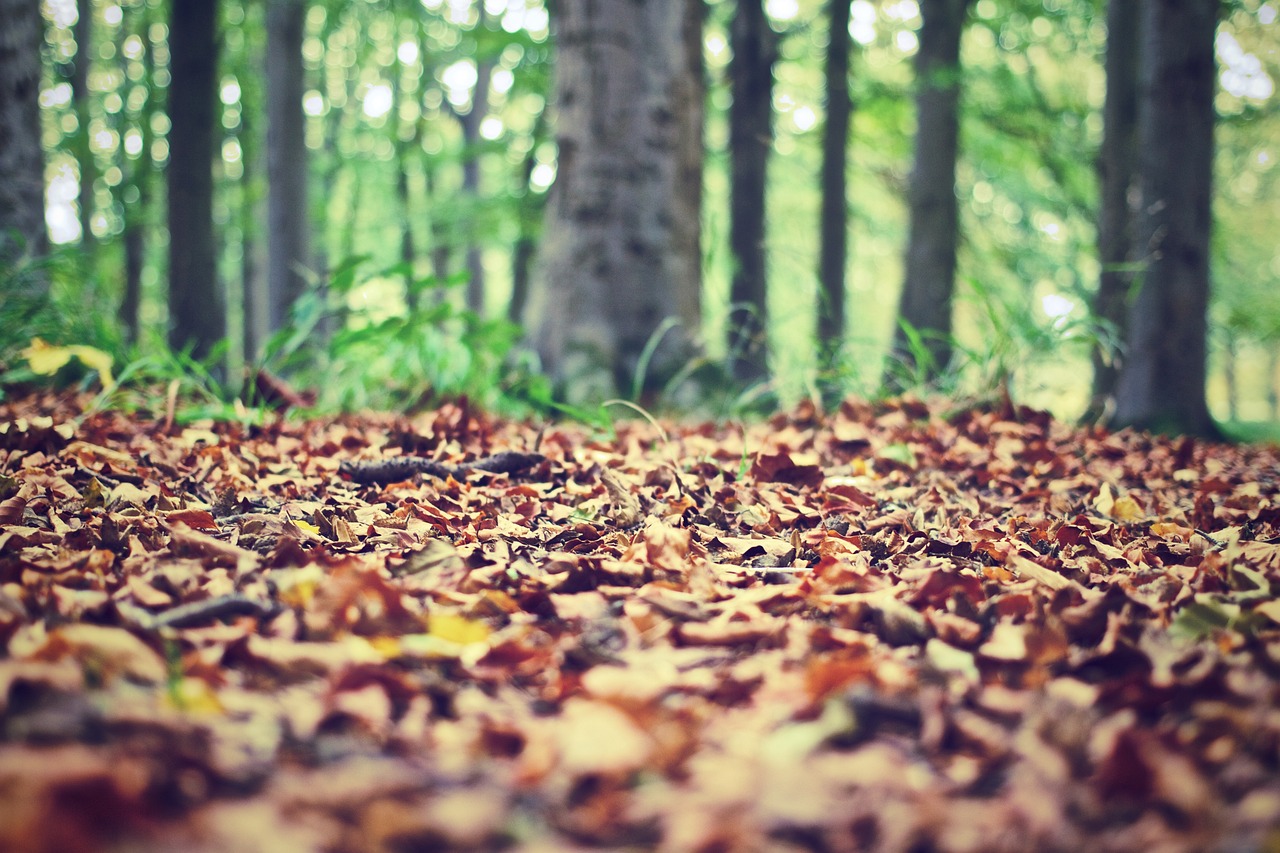
Effective Flooring Solutions
Choosing the right flooring is not just about aesthetics; it plays a critical role in ensuring safety within your home. Imagine walking barefoot in your living room and feeling the soft, cushioned floor beneath your feet. Now, picture the opposite—a hard, slippery surface that could send you tumbling. Flooring options vary widely, and understanding their safety features can help you make an informed decision that minimizes tripping hazards.
When selecting flooring, consider materials that provide both durability and slip resistance. Carpet, for instance, is a popular choice for many households due to its cushioning effect and ability to absorb impact during a fall. However, not all carpets are created equal. Some carpets can be slippery, especially when they are new. Opting for a low-pile carpet can enhance safety, as it offers better traction compared to high-pile options.
Another excellent choice is vinyl flooring. It is not only affordable but also comes with a textured surface that helps prevent slips. Additionally, vinyl is easy to clean and maintain, making it a practical option for busy households. If you’re looking for something even more resilient, consider rubber flooring. This type of flooring is often used in gyms and playrooms because it provides excellent grip and cushioning. It’s also water-resistant, which makes it ideal for areas prone to moisture, such as kitchens and bathrooms.
For those who prefer a more natural look, wood flooring can be a beautiful addition to any home. However, it’s essential to select wood floors with a non-slip finish. Some manufacturers offer treated wood that enhances grip, reducing the risk of accidents. If you love the look of hardwood but want something safer, engineered wood or laminate with a textured surface could be the perfect compromise.
Here’s a quick comparison of different flooring options based on their safety features:
| Flooring Type | Slip Resistance | Cushioning Effect | Maintenance |
|---|---|---|---|
| Carpet | Moderate | High | Moderate |
| Vinyl | High | Low | Easy |
| Rubber | Very High | High | Easy |
| Wood | Variable | Low | Moderate |
While selecting flooring, it’s also important to consider the installation process. Poorly installed flooring can lead to loose edges and gaps, which are significant tripping hazards. Always hire a professional to ensure your flooring is installed correctly, or if you're a DIY enthusiast, make sure to follow the manufacturer's guidelines meticulously.
In addition to the type of flooring, it’s essential to think about the transitions between different flooring types. For instance, the transition from a hard surface to a carpet can create a step that may not be obvious, especially in low light. Using transition strips can help create a smooth, safe transition between different flooring types, reducing the risk of tripping.
In summary, the right flooring can make a world of difference when it comes to safety at home. By choosing materials that offer slip resistance and cushioning, and ensuring proper installation, you can create a safer environment for yourself and your loved ones. Remember, safety doesn’t have to sacrifice style; with the right choices, you can have both!

Rugs and Mats Safety
Rugs and mats can be the perfect blend of style and comfort, but they can also be a hidden danger in your home. Imagine walking through your living room, admiring the cozy decor, when suddenly, your foot catches on a loose rug. Ouch! Tripping hazards like this can turn a beautiful space into a perilous one. To keep your home both stylish and safe, it’s essential to take a few precautionary measures.
One of the first steps in ensuring rug safety is to choose non-slip options. Many rugs come with backing that helps grip the floor, reducing the likelihood of sliding. If you already have a rug that doesn’t have this feature, don’t fret! You can easily purchase non-slip rug pads that provide an extra layer of stability. These pads not only prevent slipping but also add cushioning, making your space feel even more inviting.
Now, let’s talk about securing those pesky loose edges. Loose edges on rugs can be a major trip hazard, especially in high-traffic areas. To tackle this issue, consider using double-sided tape or rug grippers to keep the edges flat against the floor. Additionally, if you have a larger rug, you might want to anchor it down with furniture. Placing a coffee table or sofa on the corners can help keep it in place, ensuring that your rug remains a safe part of your home.
When selecting a rug, the material is just as important as its design. Some materials, like plush carpets, can be more prone to slipping than others. Opt for materials that offer better traction, such as sisal or jute, which not only look great but also provide a more stable surface. If you love the feel of a soft rug, consider layering it with a non-slip pad underneath for added safety.
In summary, keeping your rugs and mats safe involves a combination of choosing the right products and securing them properly. By taking these steps, you can enjoy the aesthetic appeal of your rugs while minimizing the risk of accidents. Remember, a little precaution goes a long way in creating a safer home environment.
- What should I look for when buying a rug to prevent tripping hazards? Look for rugs with a non-slip backing, or consider using a rug pad underneath to secure it in place.
- How can I secure loose edges on my rugs? You can use double-sided tape, rug grippers, or place furniture on the corners of the rug to keep it flat against the floor.
- Are there specific materials that are safer for rugs? Yes, materials like sisal and jute provide better traction and stability compared to plush carpets.
- Can I use decorative rugs in high-traffic areas? Absolutely! Just ensure they are secured properly and made from materials that minimize slipping.

Securing Loose Edges
Loose edges on carpets and rugs can be a silent but deadly tripping hazard lurking in your home. Imagine walking through your living room, and suddenly, your foot catches on a rogue rug corner, sending you tumbling. Not only can this lead to injuries, but it can also create a sense of anxiety in your own space. Therefore, securing these loose edges is crucial for maintaining a safe environment. The good news is that there are several effective methods to tackle this issue, ensuring that your home remains a haven of safety.
First, consider using double-sided carpet tape. This is a simple yet effective solution that can keep your rugs firmly in place. Just apply the tape to the underside of the rug, pressing it down onto the floor. This method is especially useful for rugs in high-traffic areas, where they're more likely to shift. However, be cautious with wooden or delicate flooring, as some tapes can cause damage upon removal.
Another option is to invest in non-slip rug pads. These pads not only provide cushioning but also grip the floor, preventing the rug from sliding around. When selecting a rug pad, make sure to choose one that fits your rug size perfectly. A pad that’s too small won’t provide adequate support, while one that’s too large can create additional tripping hazards. Here's a quick comparison of different types of rug pads:
| Type of Rug Pad | Material | Benefits |
|---|---|---|
| Foam | Polyurethane | Provides cushioning and shock absorption. |
| Rubber | Natural or synthetic rubber | Excellent grip and prevents slipping. |
| Felt | Felt fibers | Offers cushioning and is eco-friendly. |
Additionally, if you're dealing with wall-to-wall carpeting, consider using carpet tacks or staples to secure any loose edges. This method is particularly effective for carpets that have started to fray or lift at the corners. Just be sure to use a staple gun with care, as you want to avoid damaging the carpet fibers themselves.
Finally, regular maintenance is key. Periodically check your rugs and carpets for any signs of loosening or fraying edges. By addressing these issues promptly, you can prevent them from becoming more significant hazards. Remember, a little attention goes a long way in creating a safe living space. So, take the time to secure those loose edges and enjoy peace of mind as you move around your home!
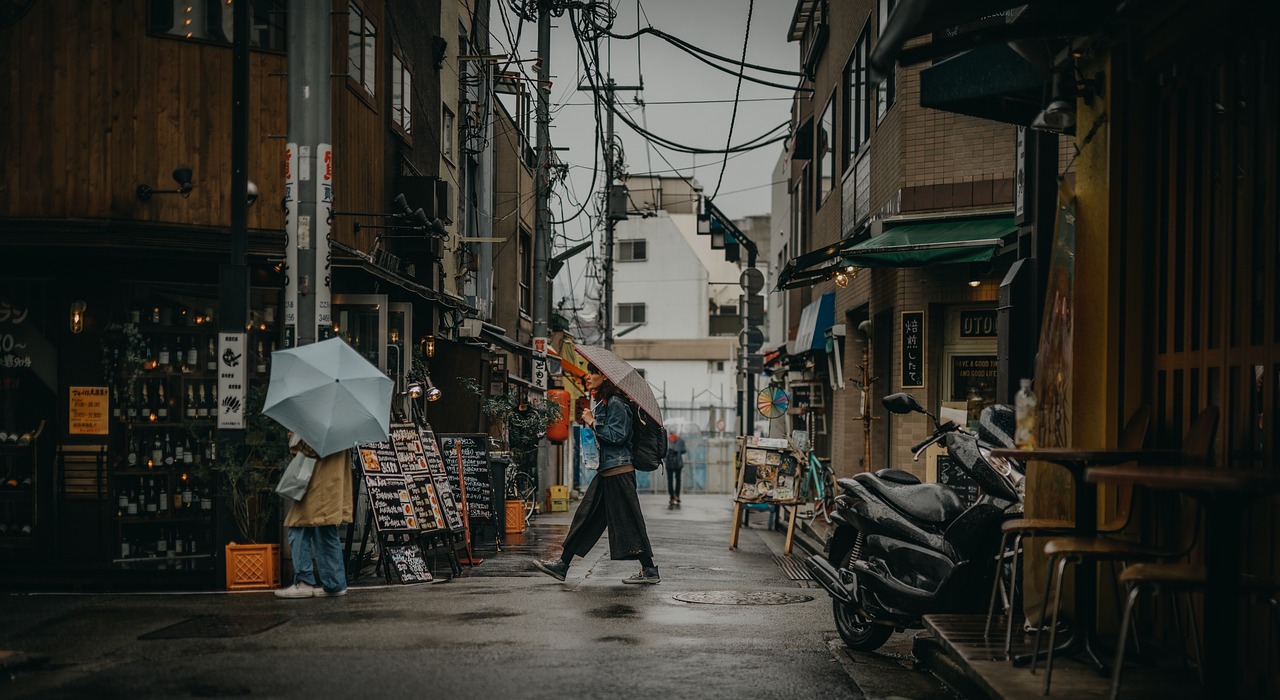
Choosing the Right Material
When it comes to preventing tripping hazards, the material of your rugs and mats plays a pivotal role. Not all materials are created equal, and some can significantly enhance safety while others can be slippery and dangerous. For instance, natural fibers like wool and cotton tend to provide better traction compared to synthetic options. Imagine walking on a soft, plush rug that feels secure underfoot versus a slick, shiny synthetic mat that could send you flying if you’re not careful!
To help you make an informed decision, here are some characteristics to consider when selecting rug materials:
- Traction: Look for materials that offer a good grip. Textured surfaces can help prevent slips and falls.
- Weight: Heavier rugs are less likely to slide around. Consider options that have a substantial weight to them.
- Backing: Rugs with a non-slip backing can be a game-changer. They provide additional stability and reduce the chance of slipping.
- Maintenance: Some materials are easier to clean than others. Opt for those that can withstand regular cleaning without losing their grip or texture.
Additionally, consider the environment in which the rug will be placed. For example, in high-traffic areas like hallways or living rooms, a durable material that can handle wear and tear is essential. On the other hand, in less frequented spaces like bedrooms, you might prioritize comfort over durability. Here’s a quick comparison of some common rug materials:
| Material | Traction Level | Durability | Maintenance |
|---|---|---|---|
| Wool | High | Moderate | Easy to clean |
| Cotton | Moderate | Low | Machine washable |
| Synthetic (Polyester, Nylon) | Low to Moderate | High | Easy to clean |
| Jute | Moderate | Moderate | Spot clean only |
Choosing the right material is not just about aesthetics; it’s about creating a safe environment for you and your loved ones. A rug that looks great but poses a risk is not worth it. So, next time you’re shopping for rugs or mats, keep these factors in mind. Think of it as investing in your home’s safety. After all, a secure home is a happy home!
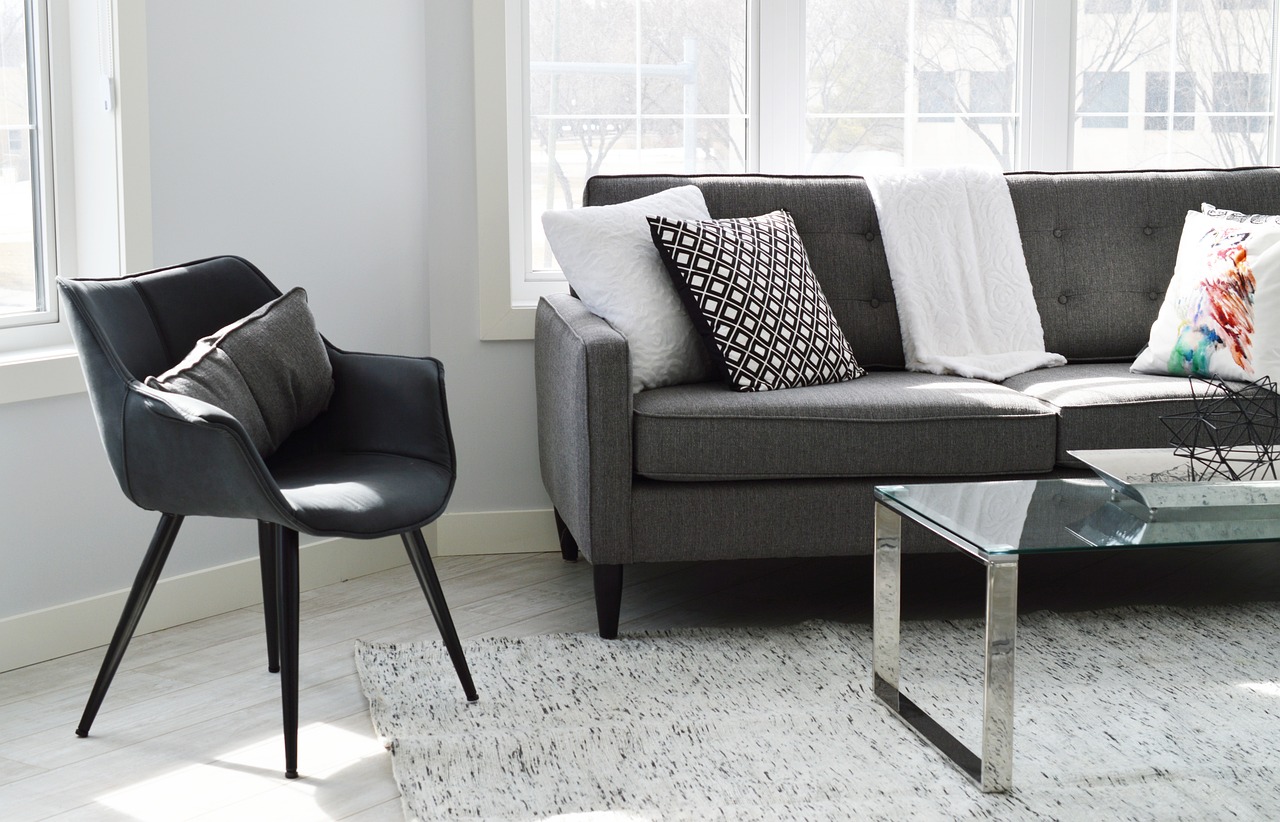
Lighting and Visibility
When it comes to preventing trips and falls in your home, play a pivotal role. Imagine walking through a dark room; you’re more likely to stub your toe or trip over an unseen object, right? Good lighting not only illuminates your space but also enhances your ability to see potential hazards before they become a problem. It’s like having a spotlight on your home’s safety!
First and foremost, consider the areas in your home that require the most light. Staircases, hallways, and entryways are critical spots where shadows can lurk and create dangerous situations. Installing bright, energy-efficient bulbs can make a significant difference. Additionally, using motion-sensor lights can provide illumination when you need it most, especially during late-night trips to the kitchen or bathroom. These lights can guide your way without you having to fumble for a switch in the dark.
Don’t underestimate the power of natural light either! Keeping your windows clean and unobstructed allows sunlight to flood your home, reducing the need for artificial lighting during the day. You might also consider using light-colored curtains or blinds that can reflect light rather than absorb it, maximizing the brightness in your rooms.
Another essential aspect of lighting is the use of task lighting. This includes strategically placed lamps or fixtures that provide focused light on specific areas, like reading nooks or workspaces. By ensuring these areas are well-lit, you can prevent accidental trips over books, tools, or other items that might be lying around. Here’s a quick table that summarizes the types of lighting you can use:
| Type of Lighting | Purpose |
|---|---|
| Ambient Lighting | General illumination for the entire room |
| Task Lighting | Focused light for specific tasks |
| Accent Lighting | Highlighting specific areas or objects |
| Natural Lighting | Utilizing sunlight to illuminate spaces |
Finally, don’t forget about the importance of light switches! Make sure they are easily accessible and consider installing dimmer switches to adjust the brightness according to your needs. For those with mobility issues, illuminated switches can be a game-changer, making it easier to navigate your space safely.
In conclusion, enhancing in your home is one of the simplest yet most effective ways to prevent tripping hazards. By ensuring that your spaces are well-lit, you not only make your home more inviting but also significantly reduce the risk of accidents. So, let there be light, and let it shine brightly for a safer living environment!
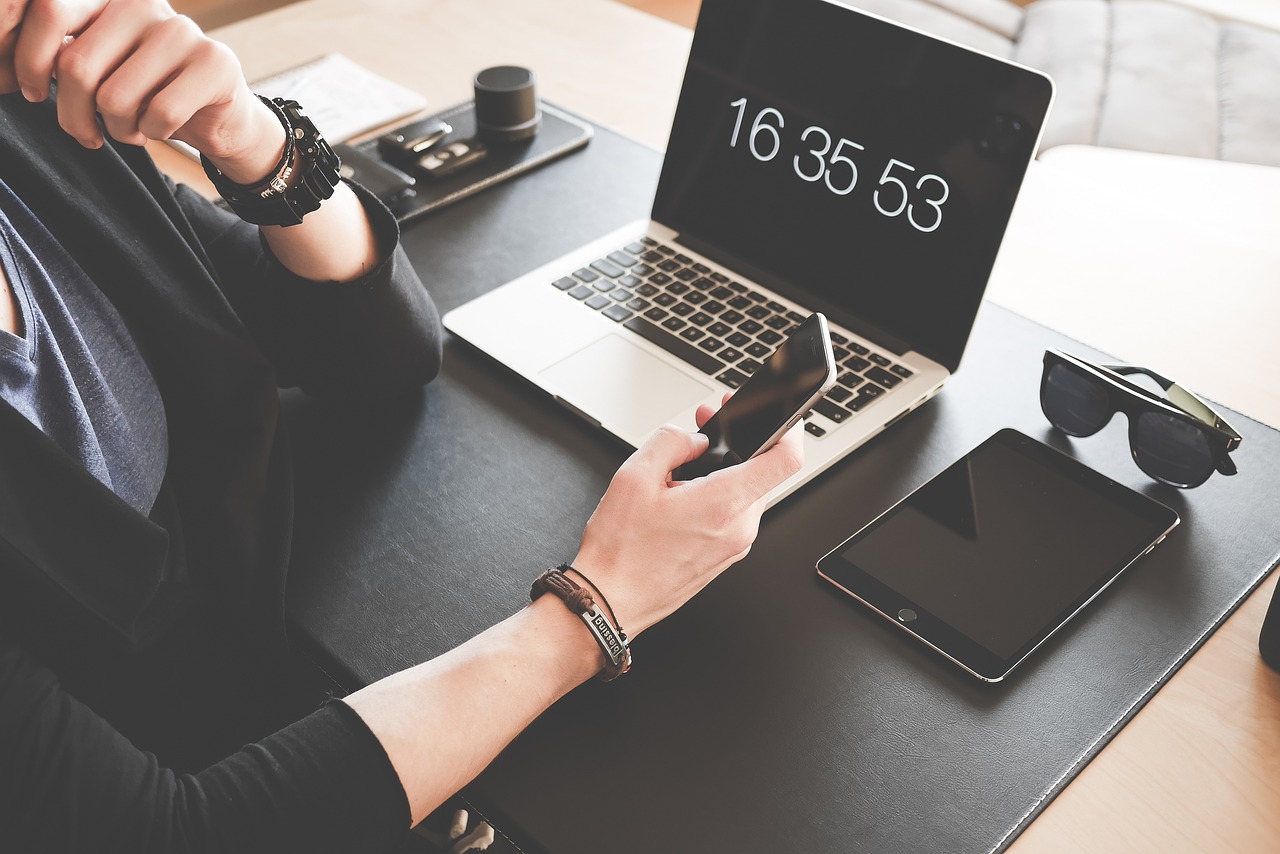
Organizing Your Space
Creating a safe and inviting home starts with . When you think about it, a cluttered environment can be a recipe for disaster, especially when it comes to tripping hazards. Imagine walking through your living room and having to navigate around scattered toys, shoes, or even that stack of magazines you've been meaning to sort. It's not just annoying; it's dangerous! By taking the time to organize your space, you can significantly reduce the risk of accidents. So, where do you start?
First, consider the layout of your home. Is there furniture blocking pathways? Are there items on the floor that could easily be tripped over? A good rule of thumb is to keep walkways clear and accessible. You want to create a flow that allows everyone to move freely without obstacles. Think of your home as a dance floor; the more space you have, the smoother the moves!
Next, decluttering is your best friend. Regularly going through your belongings can help you identify what you truly need and what can be tossed or donated. Not only does this make your home look better, but it also minimizes the chances of tripping over items you forgot you even had. For instance, you might find that old pair of rollerblades you haven’t used in years. Why not donate them to someone who will? This not only clears your space but also helps someone else out!
When it comes to storage solutions, think vertical. Utilizing shelves, cabinets, and bins can help keep items off the floor. Consider the following ideas:
- Install wall shelves to keep books and decorative items out of the way.
- Use baskets or bins to store toys and other small items, making them easy to access but out of the way.
- Opt for multi-functional furniture, like ottomans with storage inside, to maximize space.
Another effective strategy is to designate specific areas for frequently used items. For example, create a spot near the door for shoes and bags, so they don’t end up scattered throughout your home. This not only keeps your space tidy but also ensures that important items are always in their place, reducing the risk of tripping over them.
In summary, organizing your space is not just about aesthetics; it’s about creating a safe environment for you and your loved ones. By keeping walkways clear, regularly decluttering, and utilizing smart storage solutions, you can significantly reduce tripping hazards. So, roll up your sleeves, put on some music, and transform your home into a safer haven!
Q: How often should I declutter my home?
A: It's a good idea to declutter at least once every few months, but you can also do a quick tidy-up weekly to keep things manageable.
Q: What are some quick tips for keeping my space organized?
A: Start small! Focus on one room or area at a time. Use storage bins, label everything, and make it a habit to put things back in their designated spots.
Q: How can I involve my family in organizing the home?
A: Make it a family activity! Assign tasks based on age and ability, and perhaps turn it into a fun game with rewards for completing tasks.
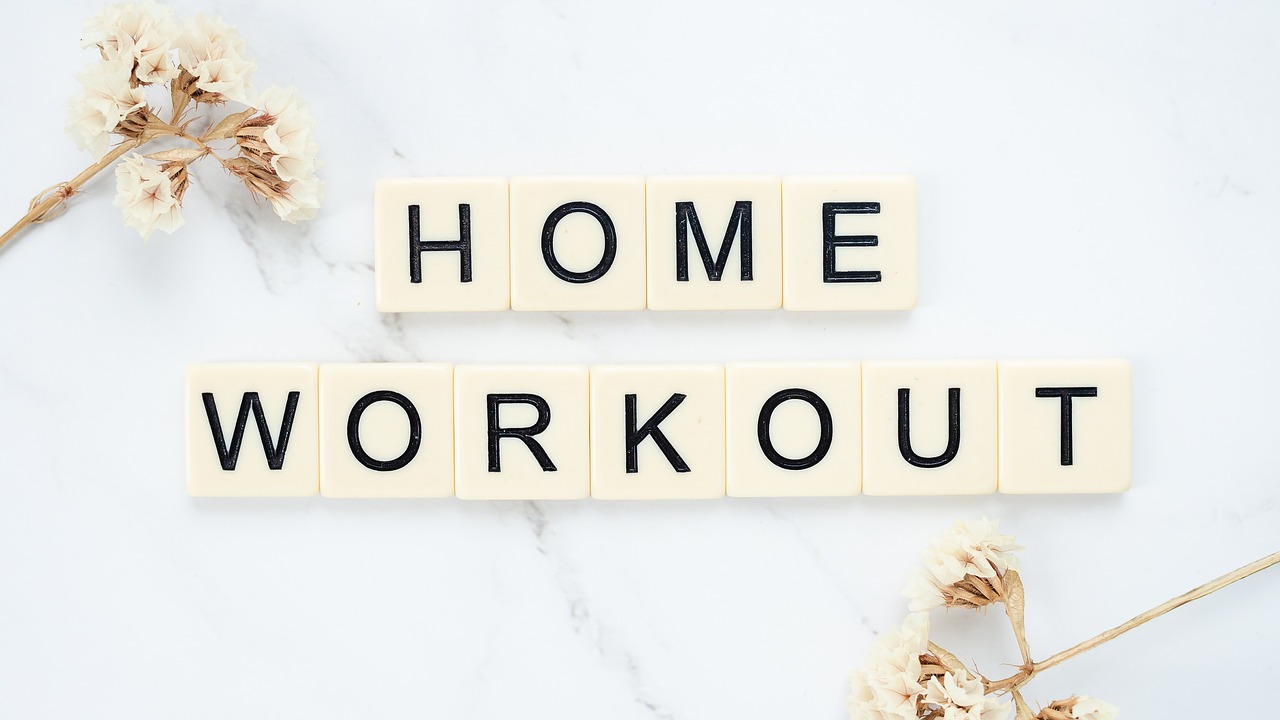
Decluttering Tips
Decluttering your home is not just about aesthetics; it's a vital step toward creating a safer living environment. Imagine walking through your home without dodging random items strewn across the floor—sounds like a dream, right? The first step to achieving this blissful state is to commit to regular decluttering sessions. Set aside a specific time each week or month to tackle different areas of your home. This way, it becomes a routine rather than a daunting task.
One effective strategy is to tackle one room at a time. This approach allows you to focus and feel accomplished as you see progress. Start with the most cluttered room or the one you use the most. As you sort through items, ask yourself: “Do I use this?” and “Does it bring me joy?” If the answer is no, it’s time to let it go. You can donate, recycle, or throw away items that no longer serve a purpose.
Another useful tip is to utilize the “One In, One Out” rule. For every new item you bring into your home, make it a habit to remove one item. This simple rule helps maintain balance and prevents clutter from accumulating. You might be surprised at how quickly this can transform your space!
When it comes to decluttering, having the right tools can make all the difference. Consider investing in some storage solutions to keep your space organized. For instance, use clear bins to store seasonal items or label boxes for easy identification. This not only keeps your items organized but also makes it easier to find what you need when you need it. And remember, a well-organized space is a safer space!
Finally, don't forget about your floors! As you declutter, pay attention to the pathways in each room. Ensure that walkways are clear of obstacles, and consider rearranging furniture to create a more open environment. A spacious layout minimizes the risk of trips and falls, making your home a safer haven for everyone.
If you're wondering about decluttering or safety measures in your home, here are some common questions and answers to help you out:
- How often should I declutter my home? Aim for at least once a month, but you can do it more frequently if you notice clutter building up.
- What should I do with items I no longer need? Consider donating them to local charities, recycling them, or selling them online.
- Are there any tools that can help with decluttering? Yes! Storage bins, labels, and organizers are great tools to keep your space tidy.
- How can I encourage my family to help with decluttering? Make it a fun activity! Set a timer and see who can declutter the most in a set time, or play some music to make it enjoyable.
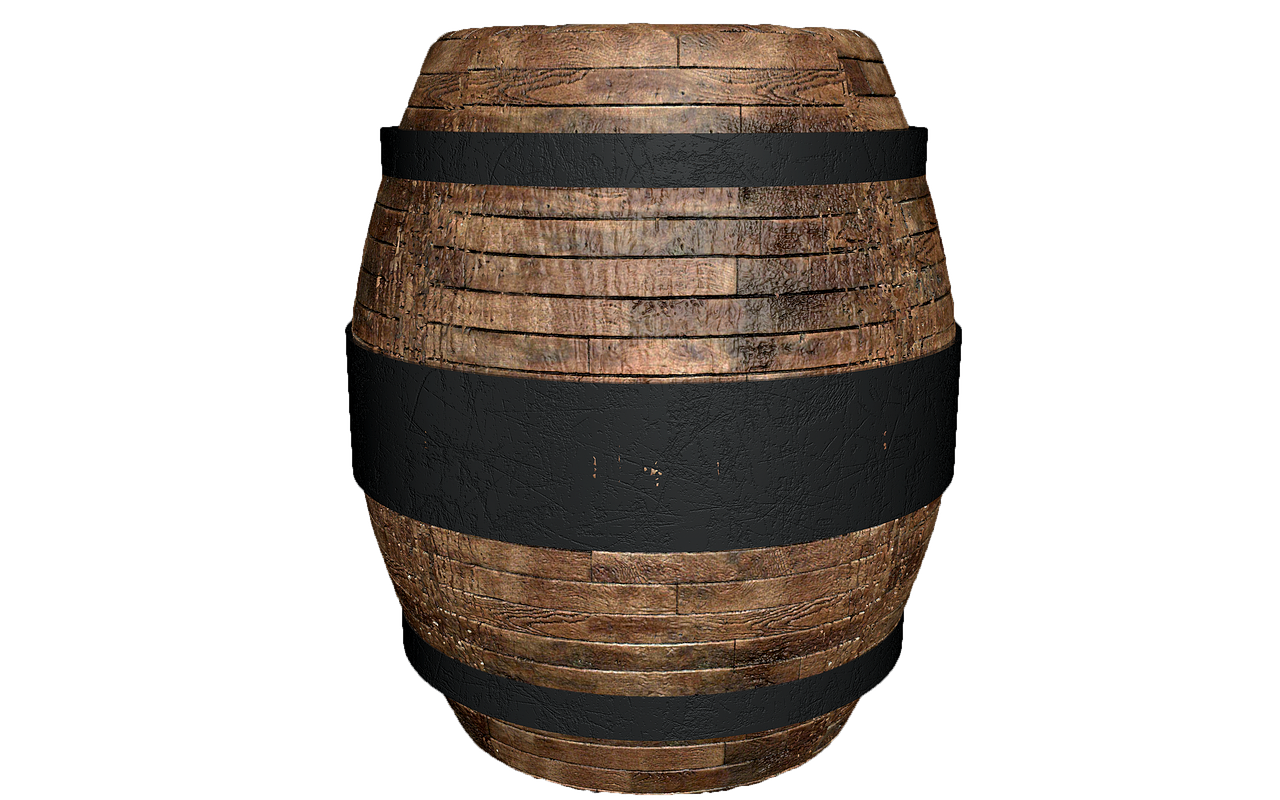
Storage Solutions
When it comes to creating a safe living environment, effective play a pivotal role. Imagine walking through your home and not having to dodge shoes, bags, or other items strewn across the floor. It’s not just about aesthetics; it’s about preventing accidents and ensuring that every member of your household can move freely without the fear of tripping. The right storage options can elevate your space, making it both functional and safe.
One of the most effective strategies is to utilize vertical space. Think about it: when you can store items higher up, you free up valuable floor space. Shelving units, wall-mounted racks, and hooks can transform cluttered areas into organized havens. For example, a simple wall-mounted shelf in your entryway can hold keys, bags, and other essentials, keeping them out of the way. Not only does this enhance safety, but it also creates a more visually appealing environment.
Additionally, consider investing in multi-functional furniture. Pieces like ottomans with hidden storage or coffee tables that double as storage units can help you keep items out of sight while providing utility. This not only declutters your space but also minimizes the chances of tripping over loose items. When selecting furniture, always think about how it can serve more than one purpose.
Another effective approach is to implement clear storage bins. These bins allow you to see what’s inside without having to rummage through everything. By categorizing items—such as seasonal decorations, sports equipment, or toys—you can easily access what you need while keeping things organized. Labeling these bins can further enhance their functionality, making it easy for everyone in the household to know where things belong.
In the kitchen, consider using pull-out shelves or lazy Susans to keep items accessible yet tucked away. This not only reduces clutter but also ensures that you’re not reaching over or bending down to grab items, which can lead to accidents. When everything has a designated spot, it becomes second nature to return items to their place, maintaining a safer environment.
Lastly, don’t underestimate the power of regular maintenance. Take the time to assess your storage solutions periodically. Are there items that can be donated or thrown away? Are there better ways to organize your space? By staying proactive, you can ensure that your home remains a safe haven for everyone.
In conclusion, implementing effective storage solutions is a simple yet powerful way to enhance safety in your home. By utilizing vertical space, investing in multi-functional furniture, using clear storage bins, optimizing kitchen organization, and maintaining your storage systems, you can create an environment that minimizes tripping hazards. Remember, a well-organized space is not just about convenience; it's about creating a safer living environment for you and your loved ones.
- What are the best types of storage solutions for small spaces? Vertical shelving, under-bed storage, and multi-functional furniture are great options for maximizing space.
- How can I encourage my family to keep things organized? Create designated spots for items and involve everyone in the decluttering process to foster a sense of ownership.
- Are there specific materials that are better for storage bins? Look for clear plastic bins or breathable fabric options that provide visibility and protection from dust.
Frequently Asked Questions
- What are some common tripping hazards in the home?
Common tripping hazards include loose rugs, cluttered walkways, uneven flooring, and wires or cords left out in the open. Identifying these hazards is the first step toward making your home safer.
- How can I choose safe flooring options?
When selecting flooring, look for materials that are slip-resistant and provide cushioning. Options like vinyl, cork, or rubber can be great choices for reducing tripping hazards.
- What should I do about rugs and mats?
To enhance safety, secure rugs with non-slip pads and ensure that the edges are flat against the floor. Avoid using rugs in high-traffic areas unless they are specifically designed to be safe.
- How important is lighting in preventing trips and falls?
Proper lighting is crucial! Well-lit areas help you see potential hazards clearly. Use bright bulbs in hallways, staircases, and entryways to enhance visibility.
- What are some decluttering tips to prevent tripping?
Regularly assess your living space and remove items that are no longer needed. Create designated storage areas for shoes, bags, and other personal items to keep walkways clear.
- What storage solutions can help keep my home organized?
Consider using shelves, bins, and hooks to store items off the floor. Vertical storage options can maximize space and keep your home tidy, reducing tripping risks.


